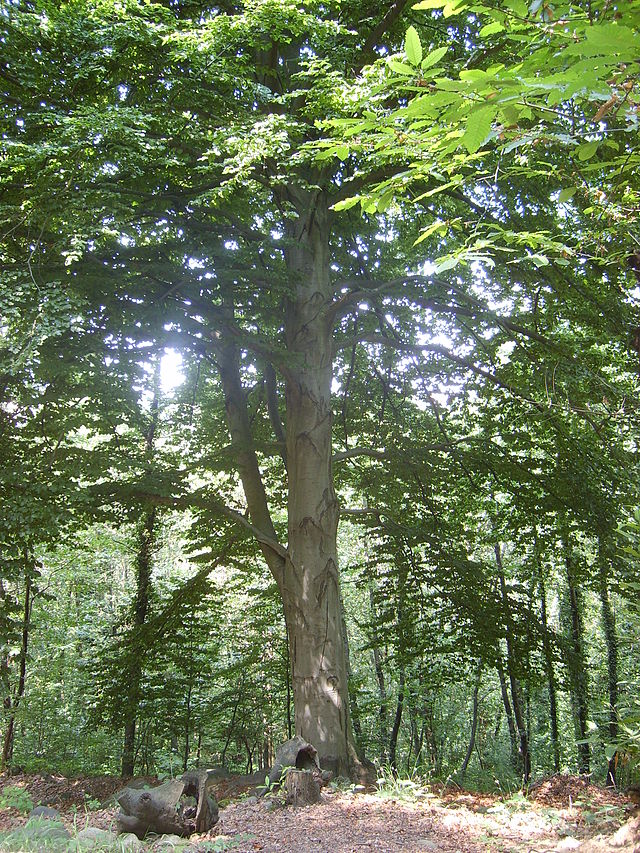
Collina Torinese (Turin’s Hill) Natural Park
This post is also available in:
 Italiano (Italian)
Italiano (Italian)
Collina Torinese Natural Park brings together two protected areas, managed by “Ente di Gestione delle Aree Protette della Collina Torinese”: the Special Natural Reserve of “Bosco del Vaj”, with a surface area of 176 acres, and “Collina di Superga Natural Park”, covering 1.843 acres.
Special Natural Reserve of Bosco del Vaj
Established in 1978, “Bosco del Vaj” Special Nature Reserve features the typical presence of chestnut trees (Castanea sativa), oaks (Quercus spp.), and beech trees (Fagus sylvatica), the latter considered “glacial relics” because they have been growing on the hills of Turin after the last ice-age.
The landscape is characterized by hills, the so-called “bric”, with steep slopes towards the Po River and softer ones on its southern side (this very area is subject to landslides). In the XVIII century, several fossils and footprints of ancient plants and animals could be already found, perfectly preserved among the marine sediments.
The flora is variegated and includes several species of mountain and Mediterranean origin. Among the rare flowers, there are martagon lilies (Lilium martagon), mezereums (Daphen merezum), and some orchids.
The fauna includes many mammals such as foxes, badgers, stone martens, weasels, hedgehogs, and squirrels, as well as buzzards, sparrow hawks, tawny owls, green woodpeckers, greater red woodpeckers, hoopoes, and black buntings.
Natural Park of the Superga Hill
Established in 1991, “Collina di Superga” Natural Park is aimed at protecting the hill and its peculiar environmental, landscape, and architectural feature (the Basilica of Superga), even more so because it is so close to the big town of Turin
The hills are made of sedimentary rocks (sandstone, conglomerate, and marlstone), rich in fossils and originally appeared on the ocean floor about 40 million years ago.
As for “Bosco del Vaj”, the local flora features Mediterranean-type trees and several floral species (ashes, rowans, hollies, dictamnus), as well as mountain plants (beeches, Scots pines, mountain ashes, bilberries). Chestnuts and oaks prevail, but some exotic plants (conifers and locust trees) have replaced vineyards and orchards, cultivated until a few decades ago and then abandoned.
Among the animal species, there are the same mammals and birds already present in “Bosco del Vaj”, with the addition of wild boars which have dramatically increased in their numbers in recent years.
The routes
A network of 195 routes, which can be traveled on foot and by bicycle, 522 mile-long, runs across Collina Torinese in every direction; all the routes have been identified, mapped, and recorded by a group of voluntary associations since 1996. They are mentioned in maps and guides published by Collina Torinese Park Authority.
In particular, there are two long-distance hiking itineraries: “Grande Traversata della Collina”, about 37 mile-long, which connects Moncalieri (TO) to Chivasso (TO), and “Crea Superga”, about 44 mile-long, which runs from Basilica of Superga to Sacro Monte di Crea (AL).
MARCH 2016:
Collina Po Park in Turin was also recognized as the new Italian Biosphere Reserve, during the fourth edition of the UNESCO World Congress MaB (Man and Biosphere) – included in the list of “Man and Biosphere” Reserves (March 2016, in Peru). The International Coordination Council has acknowledged this protected area as the first “Urban MAB” in Italy, introducing it as “a highly anthropized naturalistic territory, belonging to a geographical area with interesting biodiversity, rich in waters, cohesive hills and woods, with the growing presence of flora and fauna”.
This post is also available in:
 Italiano (Italian)
Italiano (Italian)
Contatti
Via Alessandria, 2 - Castagneto Po(TO)
011 912462
info.parcopotorinese@inrete.it



